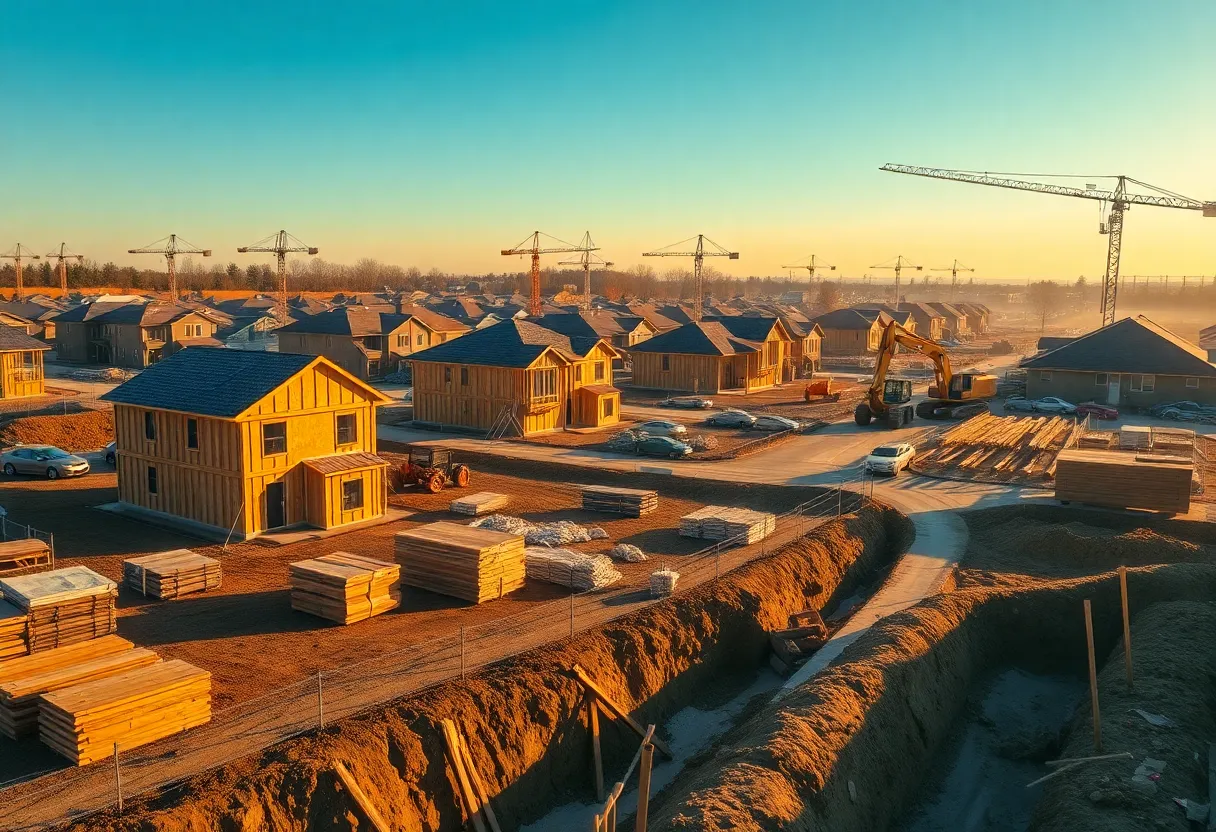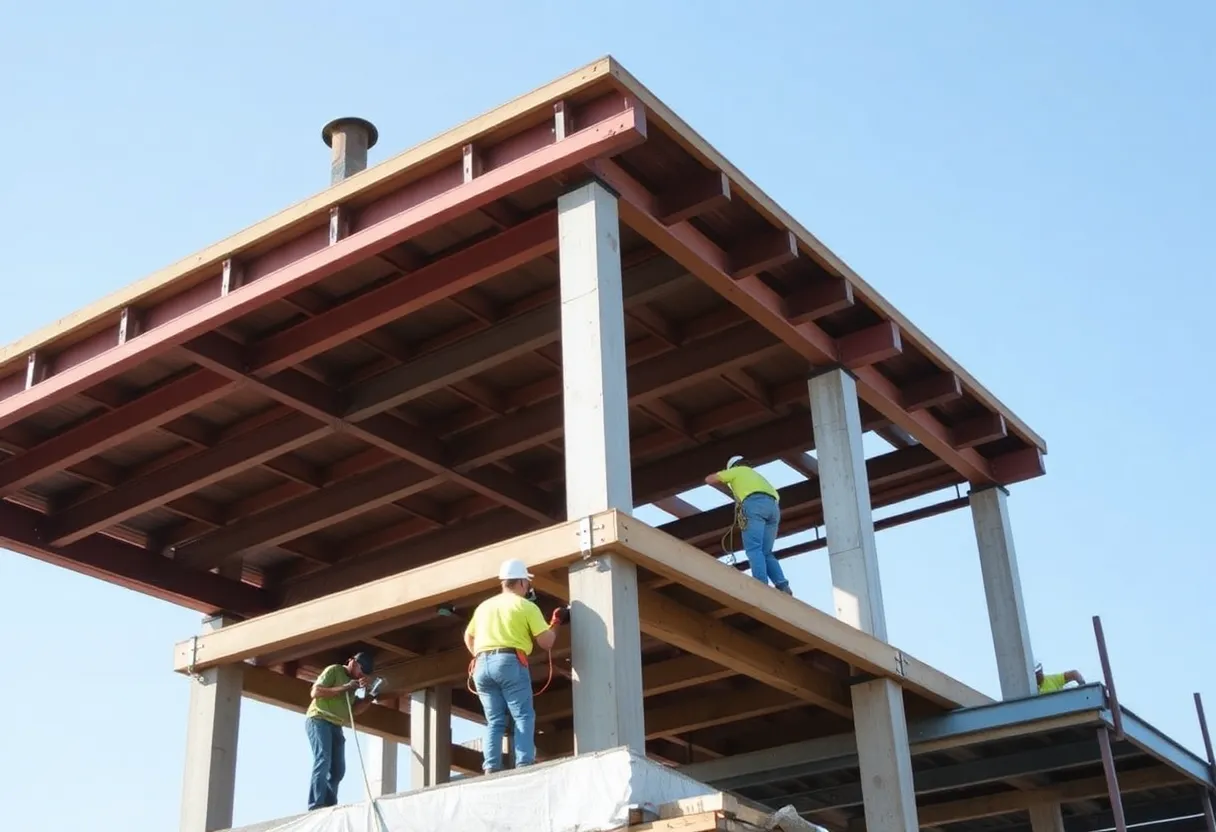United States, October 1, 2025
News Summary
A growing shortage of homes has pushed new construction to the forefront, but many banks are retreating from speculative ground-up projects. Private capital is filling that financing gap by offering faster closings, flexible underwriting and phased, performance-based funding tied to construction milestones. Although private construction loans often carry higher rates, quicker draws and localized project expertise can reduce delays, lower carrying costs and improve returns. Regional trends show strong demand in the Southeast and Sun Belt while multifamily pipelines have cooled. Heat-safety rules and scarce shovel-ready lots also shape schedules and labor availability for builders.
Private Capital Steps In as Banks Pull Back; Heat Rules and Apartment Supply Shift the U.S. Housing Picture
By Kevin Rodman — CEO, Asset Based Lending
Kevin Rodman has more than 38 years of experience in mortgage lending and real estate and has led large financing operations and warehouse lending programs. His background includes long tenure in senior roles running fixed-income financing, mortgage businesses and mortgage subsidiaries, and he joined Asset Based Lending in 2014.
The ongoing shortage of homes across the U.S. has pushed new construction to the front as one of the clearest ways to increase supply. With many traditional banks stepping away from risky or complex ground-up projects, private capital is emerging as the main source of financing that keeps new subdivisions, single-family developments and some multifamily work moving forward.
Top line: why private capital matters now
Banks still dominate many parts of real-estate finance, but tighter regulations, long approval timelines and reduced appetite for speculative land and horizontal work have left a financing gap. Private lenders are filling that gap. They offer speed, flexibility and local market knowledge that often determines whether a project breaks ground or stalls.
Key differences are practical. Private providers can close loans in weeks and in many cases complete closings in under two weeks. Draws for construction progress can be approved in hours rather than days by using modern tech and tighter integration between underwriting and disbursement. That pace prevents hold-ups that would otherwise delay crews, increase carrying costs and reduce returns.
How private lenders structure deals
Private lenders are less constrained by the same regulatory frameworks that bind banks. They write guidelines tailored to each deal, focus on the asset and project viability rather than borrower credit scores alone, and often structure large developments into phased, performance‑based segments tied to construction milestones. That creativity helps match risk to reward and gives builders room to scale.
Many private firms maintain loans on their balance sheets, keeping control over draws and management through loan life. That continuity — a single point of contact and matched underwriting and draw control — helps projects finish on budget and schedule. Where lenders syndicate behind the scenes, borrowers still benefit from one consistent manager overseeing project execution.
Costs, underwriting and risk
Private lending rates tend to be higher than bank rates. But faster closings, fewer delays, earlier sales of finished homes and streamlined processes can lower total project costs and raise net returns, making higher rates tolerable or even advantageous. Leading private lenders pair speed with deep project intelligence: careful plan review, budget validation, draw schedule analysis and local market assessments that reduce surprises.
Regional demand and supply trends
Demand for new construction solutions is strongest where housing supply is tight and population growth is steady. The Southeast and Sun Belt still draw large migration flows, with many recent multifamily and for-sale projects concentrated in metros that have seen rapid growth. By contrast, the Midwest and Rust Belt show more renovation and fix‑and‑flip activity tied to older housing stock and affordability.
The multifamily pipeline has pulled back sharply from its recent peak, with the number of units under construction down significantly since early 2023. Overall output remains substantial — on the order of several hundred thousand new multifamily units in the referenced year — but the pace has slowed and is uneven by region. New supply trends and higher development costs mean more luxury product in many markets and less midrange or affordable apartment building near urban cores.
Labor, heat risk and local rules
Extreme heat is an escalating safety issue for outdoor workers. Several states have adopted laws preempting local governments from imposing extra heat‑safety break rules, reducing local options for mandatory added water or shade breaks. At the same time, a few cities have adopted strong local protections that require shade, rest and water for outdoor crews.
Heat deaths and heat‑related illnesses are rising in some states. The frequency and intensity of extreme‑heat days is climbing, and pavement and hot mix asphalt can push worksite temperatures far above the ambient air temperature. That extra radiant heat is a real safety concern for paving and road crews, and it affects work plans and staffing decisions. Federal rulemaking on heat protections is under way, with a public comment period set to conclude in the fall of 2025; any federal standard would supersede state preemption of local ordinances.
What developers, brokers and contractors need to know
Success in ground‑up building requires the right combination of developer skill, contractor experience, broker alignment and the right lender. For brokers and originators, partnering with private lenders experienced in new construction can unlock deals that banks won’t touch. For contractors moving from subcontracting to developing, private lenders can provide capital based on proven delivery records rather than a long history as a developer.
Shovel‑ready lots remain scarce in many markets, constraining overall output. Where lots are available and local demand is strong, private capital can be the engine that turns plans into houses, helping combat the housing shortage across price points.
Contact and credentials
Asset Based Lending — P.O. Box 692, Bothell, WA 98041‑0692. Phone: (800) 297‑6061.
Frequently Asked Questions
Q: Why are banks pulling back from ground‑up development?
A: Higher regulation, longer approval timelines and reduced risk appetite for horizontal work have made many banks reluctant to finance speculative land and complex new construction.
Q: How does private lending speed affect a project?
A: Faster closings and quicker draw disbursements reduce construction holds, lower carrying costs, allow builders to seize opportunities and can improve overall project returns despite higher interest rates.
Q: Are private loans more expensive?
A: Interest rates are generally higher, but streamlined processes and faster completion can offset those costs by shortening timelines and enabling earlier sales.
Q: What regions are seeing the most private lending activity?
A: Activity is strongest where migration and population growth are steady, notably parts of the Southeast, Southwest and some mid‑Atlantic areas. Renovation activity is heavier in parts of the Midwest and Rust Belt.
Q: How does extreme heat affect construction sites?
A: Heat raises safety risks, can require schedule changes, and increases the need for rest, shade and water. Pavement and asphalt can amplify felt temperatures, making local conditions much hotter than the air temperature.
Q: Where can contractors find a heat‑illness prevention template?
A: Trade associations offer free templates and guidance on heat‑illness prevention plans that can be adapted to local jobsite needs.
{
“@context”: “https://schema.org”,
“@type”: “FAQPage”,
“mainEntity”: [
{
“@type”: “Question”,
“name”: “Why are banks pulling back from ground‑up development?”,
“acceptedAnswer”: {
“@type”: “Answer”,
“text”: “Higher regulation, longer approval timelines and reduced risk appetite for horizontal work have made many banks reluctant to finance speculative land and complex new construction.”
}
},
{
“@type”: “Question”,
“name”: “How does private lending speed affect a project?”,
“acceptedAnswer”: {
“@type”: “Answer”,
“text”: “Faster closings and quicker draw disbursements reduce construction holds, lower carrying costs, allow builders to seize opportunities and can improve overall project returns despite higher interest rates.”
}
},
{
“@type”: “Question”,
“name”: “Are private loans more expensive?”,
“acceptedAnswer”: {
“@type”: “Answer”,
“text”: “Interest rates are generally higher, but streamlined processes and faster completion can offset those costs by shortening timelines and enabling earlier sales.”
}
},
{
“@type”: “Question”,
“name”: “What regions are seeing the most private lending activity?”,
“acceptedAnswer”: {
“@type”: “Answer”,
“text”: “Activity is strongest where migration and population growth are steady, notably parts of the Southeast, Southwest and some mid‑Atlantic areas. Renovation activity is heavier in parts of the Midwest and Rust Belt.”
}
},
{
“@type”: “Question”,
“name”: “How does extreme heat affect construction sites?”,
“acceptedAnswer”: {
“@type”: “Answer”,
“text”: “Heat raises safety risks, can require schedule changes, and increases the need for rest, shade and water. Pavement and asphalt can amplify felt temperatures, making local conditions much hotter than the air temperature.”
}
},
{
“@type”: “Question”,
“name”: “Where can contractors find a heat‑illness prevention template?”,
“acceptedAnswer”: {
“@type”: “Answer”,
“text”: “Trade associations offer free templates and guidance on heat‑illness prevention plans that can be adapted to local jobsite needs.”
}
}
]
}
Key Features at a Glance
| Feature | What it Means | Impact on Projects |
|---|---|---|
| Private lending speed | Closings in days or a few weeks; fast draw approvals | Reduces delays, lowers carrying costs, enables earlier sales |
| Flexible underwriting | Custom guidelines focused on asset and market | Allows creative phasing and supports contractors entering development |
| Higher interest rates | Costs above typical bank pricing | Total project savings from speed and execution often offset rates |
| Multifamily supply shift | Pipeline contracted significantly since peak; large recent output in Sun Belt | Slower new apartment starts could keep rents stable in some regions |
| Heat‑safety preemption | State laws can block local heat protections; some cities still pass rules | Raises safety concerns and may affect labor availability and schedules |
| Contact | Asset Based Lending — P.O. Box 692, Bothell, WA 98041‑0692 | Phone: (800) 297‑6061 |
Deeper Dive: News & Info About This Topic
Additional Resources
- CoStar: After leading US in multifamily construction for years, Sun Belt sees biggest plummet in building activity
- Wikipedia: Multifamily housing
- ForConstructionPros: Heat safety rollbacks endanger road crews in the Sunbelt
- Google Search: heat safety rollbacks road crews Sun Belt
- GlobeSt: Sun‑Belt cities dominate the build‑to‑rent housing wave
- Google Scholar: build-to-rent Sun Belt
- Business Insider: Rents falling in southern Sunbelt cities as apartment building rises
- Encyclopedia Britannica: Search — Sun Belt housing market
- Reason (Volokh): NIMBYism stifles housing construction in previous growth areas
- Google News: NIMBYism housing construction Sun Belt
Author: Construction FL News
The FLORIDA STAFF WRITER represents the experienced team at constructionflnews.com, your go-to source for actionable local news and information in Florida and beyond. Specializing in "news you can use," we cover essential topics like product reviews for personal and business needs, local business directories, politics, real estate trends, neighborhood insights, and state news affecting the area—with deep expertise drawn from years of dedicated reporting and strong community input, including local press releases and business updates. We deliver top reporting on high-value events such as the Florida Build Expo, major infrastructure projects, and advancements in construction technology showcases. Our coverage extends to key organizations like the Associated Builders and Contractors of Florida and the Florida Home Builders Association, plus leading businesses in construction and legal services that power the local economy such as CMiC Global and Shutts & Bowen LLP. As part of the broader network, including constructioncanews.com, constructionnynews.com, and constructiontxnews.com, we provide comprehensive, credible insights into the dynamic construction landscape across multiple states.





